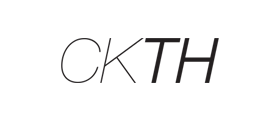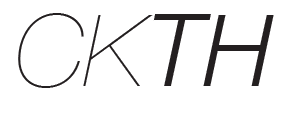BY JORDAN DINARDO

Mother Nature meets technology … Only one of them is faster without even trying
THE UNRELENTING STORM OF SEAFOOD ECOLABELS
While seafood ecolabels have been introduced as an indicator of sustainable seafood choices, the plethora of different labels can leave the average consumer confused and overwhelmed when seeking to make more environmentally informed decisions.

Parting the clouds: Decrypting some of the complexities of seafood ecolabels
There is a wide diversity of ecolabels in the seafood industry, all of which can be categorized into first, second, or third-party labelling schemes based on the type of ecolabel scheme initiator and process of certification. First-party ecolabelling schemes are typically established by individual producers or resellers based on their own seafood product standards concentrating on specific environmental issues, food quality, and health issues (e.g. Whole Foods label). Second-party ecolabelling schemes are initiated by industry associations and standards are determined by the organization (e.g. fishing companies, fishermen coalitions). Verification can be conducted internally or by an external conformity assessment body (CAB). Finally, third-party ecolabelling schemes are initiated by organizations independent of the industry (e.g. government, environmental non-governmental organization). Third-party initiators set standards and award labels to products that are assessed by CABs.
Lacking commercial biases in the establishment of standards and verification processes, third-party ecolabelling schemes are considered to be the most reliable1.
The extensive collection of ecolabels can also vary in the specific standards set by the ecolabel scheme initiator, which are used to assess and certify fishing companies supplying seafood products. The Food and Agriculture Organization (FAO) established a set of minimum environmental standards that require 1) the fishery in question to be conducted under effective local, national, or international management systems, including requirements of any regional fisheries management organizations that directs the management of the target stock, 2) the stock under consideration is not overfished, and exhibits sustainable levels, and 3) impacts of the fishery on the ecosystem should be assessed and proven negligible2. Ecolabel scheme initiators set scheme standards, consulting the FAO standards and sometimes additional environmental or social considerations, depending on their priorities.
Marine Stewardship Council (MSC) is one of the largest and well known ecolabels, recognized as the oval fish checkmark on frozen, canned, and fresh seafood products3. While MSC uses standards fairly similar to that set by the FAO, other labels focus in on key principles like the “dolphin safe” and “responsible fishing scheme” ecolabels. Whether it’s the national (U.S. Department of Commerce), international (Agreement for the International Dolphin Conservation Program), or eNGO (Earth Island) ecolabel, the “dolphin safe” labels focus on mitigating the bycatch of all dolphins in the tuna fishing industry4,5,6. The “responsible fishing scheme” ecolabel was developed by Seafish to improve the operational standards of fishing in the United Kingdom fishing sector7.
Seafood products sourced sustainably come at a price. The certification process can be costly and arduous for fishing companies to undertake and so to offset these costs, seafood products with ecolabels are usually sold at a higher price value. Depending on the prestige of the ecolabel, seafood products will vary in price and sometimes can exhibit prices 10 to 45% higher than non-certified seafood products8. When weighing your seafood product options it’s important to consider these distinctions about the assortment of seafood ecolabels in the market.
The author of this article, Jordan DiNardo, resides in San Diego, CA and is pursuing a PhD in related matters via UCSD
References
- Gopal, T.K.S., & Boopendranath, M.R. (2013). Seafood ecolabelling. Fish Technol, 50,1−10
- Wessells, C.R., Cochrane, K., Deere, C., Wallis, P., & Willmann, R. (2001). Product certification and ecolabelling for fisheries sustainability. FAO. http://www.fao.org/3/y2789e/y2789e00.htm
- https://www.msc.org/standards-and-certification/fisheries-standard
- https://www.fisheries.noaa.gov/national/marine-mammal-protection/dolphin-safe
- https://www.iattc.org/DolphinSafeENG.htm
- https://savedolphins.eii.org/campaigns/dsf
- https://www.seafish.org/responsible-sourcing/responsible-fishing-scheme-rfs/
- https://www.seafoodsource.com/news/supply-trade/msc-label-could-bring-price-premium-to-spsg-mackerel



![[FEAT] MICHAEL JORDAN DUNKING ON PATRICK EWING](http://ckth.com/cdn/shop/articles/Screen_Shot_2025-02-01_at_1.06.24_PM.png?v=1738433248&width=480)